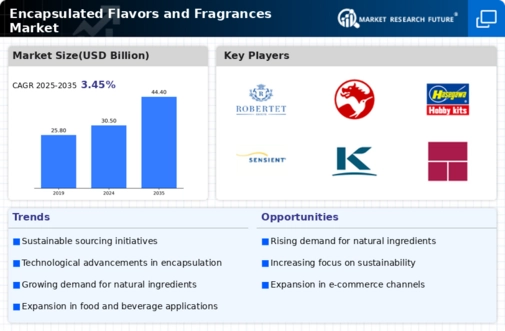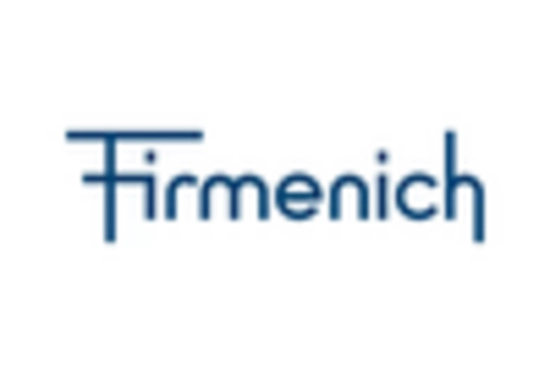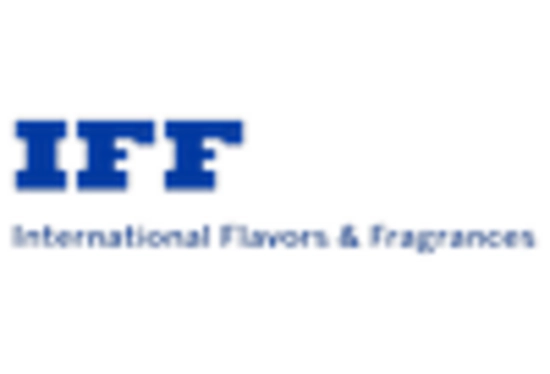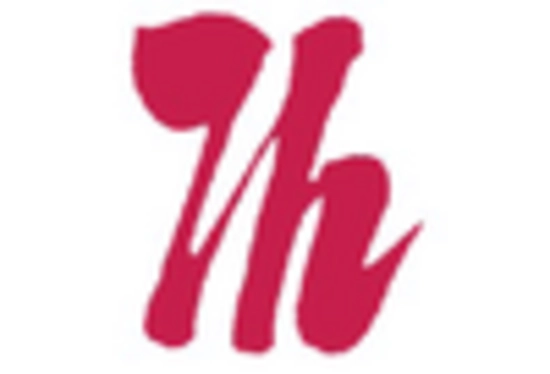The Encapsulated Flavors and Fragrances Market is currently characterized by a dynamic competitive landscape, driven by innovation, sustainability, and strategic partnerships. Major players such as Givaudan (Switzerland), Firmenich (Switzerland), and International Flavors & Fragrances (US) are at the forefront, each adopting distinct strategies to enhance their market positioning. Givaudan (Switzerland) emphasizes innovation in product development, focusing on natural and sustainable ingredients, which aligns with the growing consumer demand for eco-friendly products. Firmenich (Switzerland) has been actively pursuing mergers and acquisitions to expand its portfolio and enhance its technological capabilities, thereby strengthening its competitive edge. Meanwhile, International Flavors & Fragrances (US) is concentrating on digital transformation initiatives to optimize its supply chain and improve customer engagement, reflecting a broader trend towards digitalization in the industry.
The market structure appears moderately fragmented, with a mix of large multinational corporations and smaller niche players. Key business tactics such as localizing manufacturing and optimizing supply chains are prevalent among these companies, allowing them to respond swiftly to regional market demands. The collective influence of these major players shapes the competitive environment, as they leverage their resources and capabilities to capture market share and drive growth.
In August 2025, Givaudan (Switzerland) announced a strategic partnership with a leading biotechnology firm to develop new encapsulation technologies aimed at enhancing flavor stability and release profiles. This collaboration is likely to bolster Givaudan's innovation pipeline, enabling the company to offer more advanced solutions to its clients, thereby reinforcing its market leadership.
In September 2025, Firmenich (Switzerland) completed the acquisition of a specialty fragrance company, which is expected to enhance its product offerings and expand its customer base. This acquisition not only diversifies Firmenich's portfolio but also positions the company to better meet the evolving preferences of consumers seeking unique and personalized fragrance experiences.
In October 2025, International Flavors & Fragrances (US) launched a new digital platform designed to streamline customer interactions and improve the efficiency of its supply chain. This initiative reflects the company's commitment to digital transformation and is anticipated to enhance customer satisfaction while reducing operational costs, thereby providing a competitive advantage in a rapidly changing market.
As of October 2025, current competitive trends in the Encapsulated Flavors and Fragrances Market include a pronounced focus on sustainability, digitalization, and the integration of artificial intelligence in product development. Strategic alliances are increasingly shaping the landscape, as companies recognize the value of collaboration in driving innovation and enhancing operational efficiencies. Looking ahead, competitive differentiation is likely to evolve, with a shift from traditional price-based competition towards a greater emphasis on innovation, technological advancements, and supply chain reliability. This transition suggests that companies that prioritize these areas will be better positioned to thrive in the future market.


















Leave a Comment